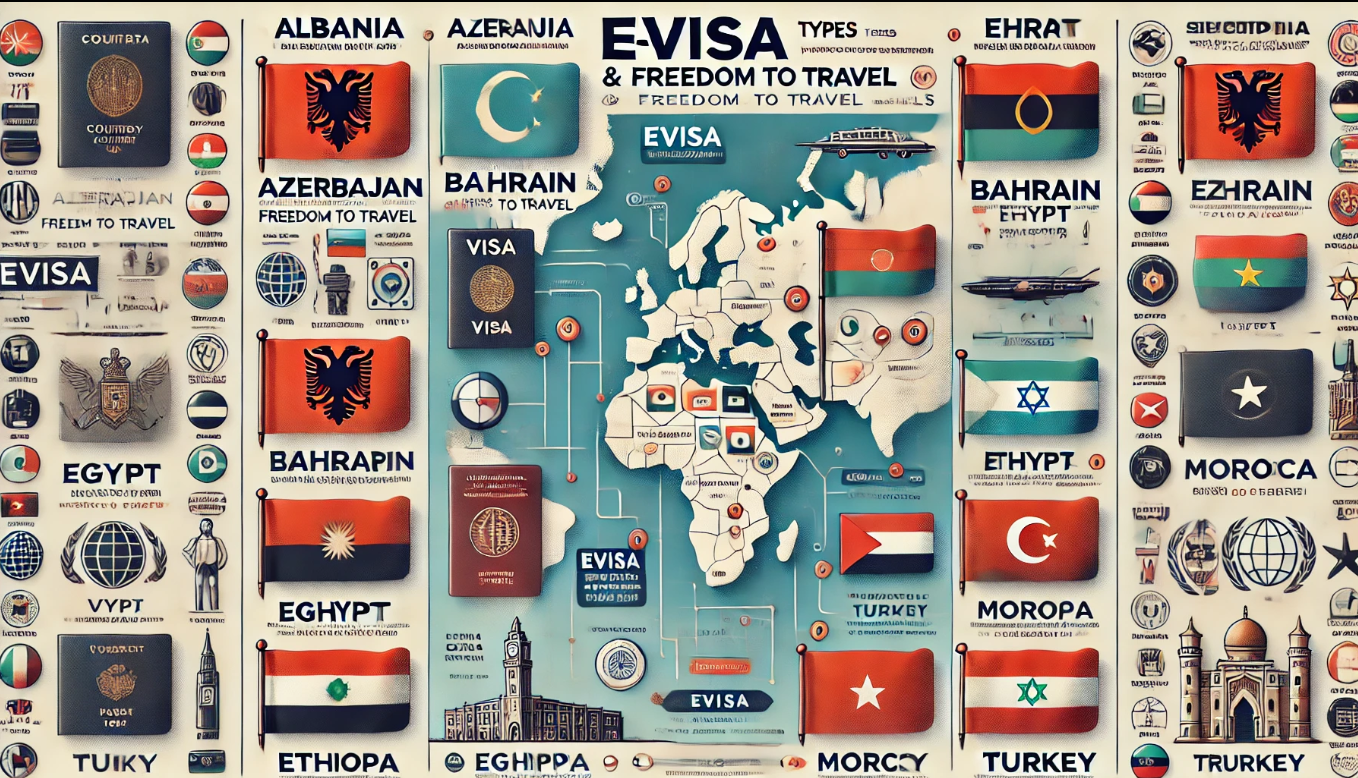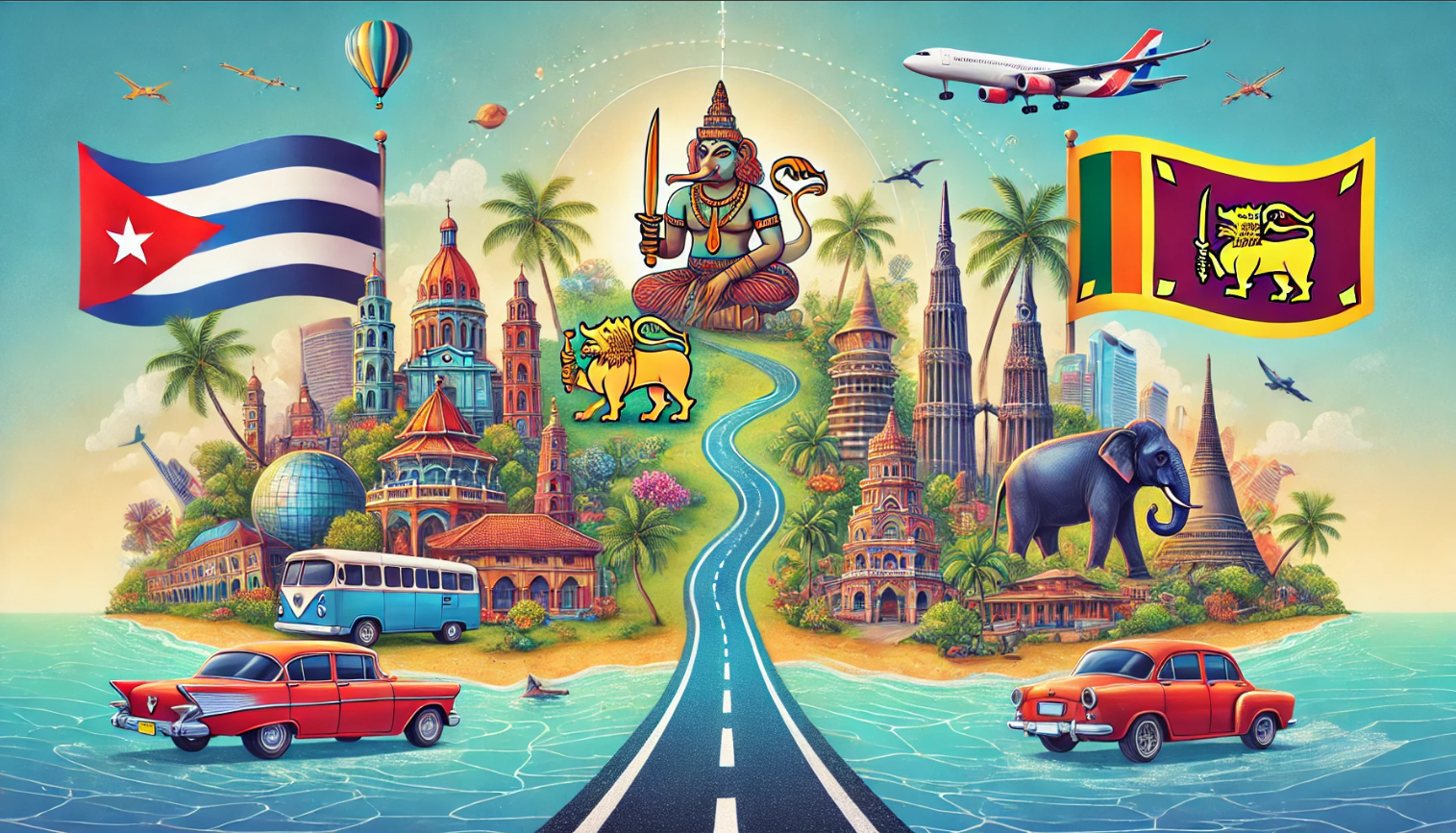Imagine this, you’re finally planning that dream trip. Bags are packed, routes are mapped, and the excitement? It’s sky-high. But just as you’re about to book those flights, you hit a small issue, what about a visa? More specifically, should you pick a single-entry or a multiple-entry eVisa?
In recent years, eVisas have made life so much easier, letting travelers like us hop from one country to the next, sometimes with just a single click. But this choice between single-entry and multiple-entry can really shape the kind of trip you have. Picture it this way, one gives you straightforward access, and the other opens doors for endless exploration. Which is the perfect fit for you?
Today, we’re breaking it down together. We’ll dive into how the flexibility of a multiple-entry eVisa stacks up against the simplicity of a single-entry one, looking at which travel style suits each best. Whether you’re on a budget or have big plans to be a globetrotter, let’s find out which eVisa will fit your travel story best.
Choosing Between Single and Multiple-Entry eVisas while Traveling
Every traveler has unique needs, and eVisa policies are designed to reflect that. Some countries make it easy by offering both single and multiple-entry eVisas. Think of destinations like Turkey and Vietnam, where you can choose the option that best suits your journey.
But, not every country is as flexible; some offer only one type of eVisa, with restrictions based on the purpose of your visit.
In the sections below, we’ll take a closer look at both single and multiple-entry eVisas, breaking down what each country has to offer. Together, let’s figure out which eVisa will make the most sense for your travel goals, so you’re ready to explore with peace of mind.
Understanding Single-Entry vs. Multiple-Entry eVisas

Photo Source: https://www.inkle.io/blog/double-entry-vs-single-entry-accounting-top-differences
Single-Entry eVisa
A single-entry eVisa is just what it sounds like, it’ll let you enter a country just once. After you’re in, you can explore freely, but if you leave, the visa is no longer valid. This option is great for tourists focusing on one place, as it’s simple and usually cheaper.
Just keep in mind that if you think you might want to leave and come back, this type of visa could be a bit limiting.
Multiple-Entry eVisa
On the other hand, a multiple-entry eVisa allows you to come and go freely for several months to a year. It’s perfect for business travelers or tourists exploring nearby countries. Although it costs a bit more upfront, the flexibility is worth it for last-minute meetings, family visits, or spontaneous trips.
Plus, you won’t need to reapply each time you return, making travel plans much easier.
Key Factors to Consider in Choosing the Right eVisa Type
Length of Stay Requirements
Are you planning an extended stay, or is this more of a quick getaway? The length of your stay can really shape which visa works best for you. If you’re visiting once and keeping things simple, a single-entry visa might be all you need. But if you’re anticipating multiple re-entries for meetings, events, or those tempting side trips, a multiple-entry visa offers you more freedom without the hassle of reapplying.
Travel Budget
You have to consider another factor is the budget. A multiple-entry eVisa, while super convenient, generally costs a bit more upfront than a single-entry. But here’s the thing, if you’ll need to re-enter frequently, it could actually save you money in the long run.
On the other hand, if you’re looking to keep costs low and don’t need the extra flexibility, the single-entry visa is a budget-friendly choice that keeps things straightforward.
Single-Entry and Multiple-Entry eVisa Options by Country

The eVisa landscape varies widely from country to country. Here’s a breakdown of what different destinations offer:
| Country | Visa Type | Best Suited For |
| Albania, Bahrain, Egypt, Turkey | Single & Multiple-Entry | Regional tourists, Business |
| Azerbaijan, Ethiopia, Morocco | Single-Entry | Business & Tourism |
| Vietnam | Single-Entry | Long-haul visitors |
| Australia, New Zealand | Multiple-Entry | Visit & Tour |
| Canada, U.S. | Single & Multiple-Entry | Business & Tourism |
| India | Double & Multiple-entry | Short Time Travel |
| Cambodia, India, Malaysia, Singapore, UAE | Single, Multiple-Entry | Southeast Asia multi-destination travelers |
| Indonesia, Thailand | Single- Entry | Multi-country travelers |
| Cuba, Oman | Single-Entry | Holiday & Business |
| Kenya, Saudi Arabia, South Africa, Sri Lanka | Single, Multiple-Entry | Regional tourists, Umrah pilgrims, Business |
Let’s take a closer look at each region.
Albania, Azerbaijan, Bahrain, Egypt, Ethiopia, Morocco, and Turkey
These countries offer both single-entry and multiple-entry eVisas, designed to meet a wide range of travel needs, from brief tourism stays to longer business trips.

A single-entry eVisa suits tourists or short-term visitors who don’t plan to leave and return during their trip. Stay lengths vary; for example, Turkey allows up to 30 days, while Morocco and Egypt may offer slightly longer periods.
For business professionals and regional travelers, a multiple-entry visa offers valuable flexibility, allowing entry and exit as needed within a set period. In places like Azerbaijan, Turkey, and Bahrain, this option may be valid for up to 90 days or more, making it ideal for those with diverse travel needs.
Our Opinion
If you have plans to explore nearby areas, such as Georgia from Azerbaijan or Cyprus from Turkey, a multiple-entry visa is your best bet.
Australia, Canada, New Zealand, United States, and Vietnam
These destinations are popular for longer stays and often have more complex visa requirements, offering both single-entry and multiple-entry options to meet diverse travel needs.

Typically valid for one-time visits, a single-entry eVisa allows stays of around 30 to 90 days. For instance, Vietnam provides a 30-day single-entry eVisa, perfect for travelers with a set itinerary or a shorter travel timeframe.
A multiple-entry eVisa is great for travelers on extended trips who need the freedom to exit and re-enter. This is especially useful for those visiting multiple countries in regions like North America (Canada and the U.S.) or Australasia (Australia and New Zealand). Vietnam also offers multiple-entry eVisas for U.S. citizens, making it easier for them to access the country frequently.
Our Opinion
A multiple-entry eVisa can be ideal for travelers combining North America or Australasia trips, where flexibility is essential.
Cambodia, India, Indonesia, Malaysia, Singapore, Thailand, and UAE
These popular Southeast Asian destinations cater to travelers on extended regional trips.
A single-entry eVisa is a great option for tourists who don’t plan on coming back after they leave. Thailand and Indonesia both offer simple single-entry eVisas that make travel easier for visitors. This option works well for travelers looking for a straightforward experience.

It’s beneficial for travelers who want to explore multiple countries on a single trip. For example, Malaysia offers a one-year multiple-entry visa for Indian and Chinese nationals, allowing them to make short visits throughout the year.
Similarly, the UAE provides multiple-entry visas specifically designed for business travelers in the Gulf region. This type of visa is ideal for those who need the flexibility to travel frequently.
Our Opinion
A multiple-entry eVisa is optimal for travelers exploring Southeast Asia in-depth, such as backpackers or business travelers with engagements across regional hubs.
Cuba, Kenya, Oman, Saudi Arabia, South Africa, and Sri Lanka
Each of these destinations has distinct entry policies that reflect different priorities in tourism and business travel.
A single-entry eVisa is perfect for travelers making a focused, one-time visit, like Saudi Arabia and Oman’s single-entry visas for short stays without re-entry.

For regional travelers, multiple-entry options work better. Saudi Arabia’s multiple-entry eVisa allows Umrah pilgrims to visit nearby Gulf countries, while Kenya’s East Africa Tourist Visa supports tourism across Kenya, Rwanda, and Uganda, giving travelers the freedom to explore multiple destinations within one trip.
Our Opinion
If you plan to move between neighboring regions, such as the GCC or East Africa, a multiple-entry eVisa is highly practical.
How to Choose the Right eVisa Type for Your Plans
When deciding between a single-entry and a multiple-entry eVisa, consider these questions to help clarify your needs:
Will you be visiting nearby countries? If yes, a multiple-entry eVisa can offer greater convenience and savings.
Are you planning to return shortly after your first visit? Frequent trips are easier with a multiple-entry visa.
Is your purpose business, tourism, or both? Generally, multiple-entry visas offer the flexibility needed for business, while single-entry can suffice for tourism-focused stays.
Application Tips and Best Practices
Take the time to ensure all details are correct before submitting your application. Simple errors can delay approvals, so double-checking information is key.
Be sure to read the visa conditions carefully, as they can vary by country. Knowing the allowed duration, entry type, and any restrictions in advance will help prevent unexpected issues during your travels.
Conclusion
Choosing the right eVisa type can make or break a trip. With careful consideration of your itinerary, budget, and needs, you can select the visa option that ensures a smooth journey. You can check out different eVisa options online for the countries mentioned above.
And remember, each destination holds unique sights, sounds, and experiences, so it’s worth checking out all the options before embarking on your next journey.


